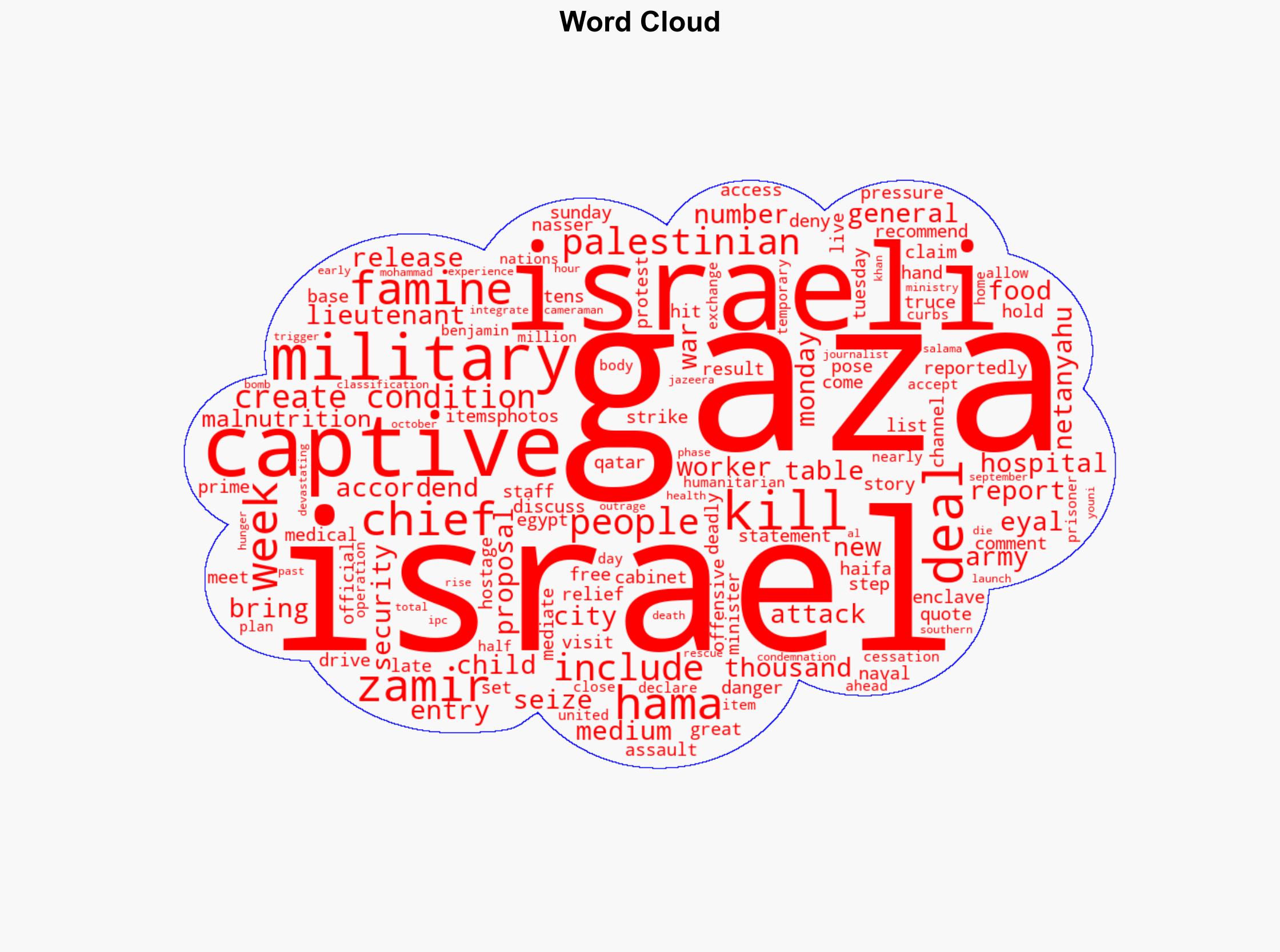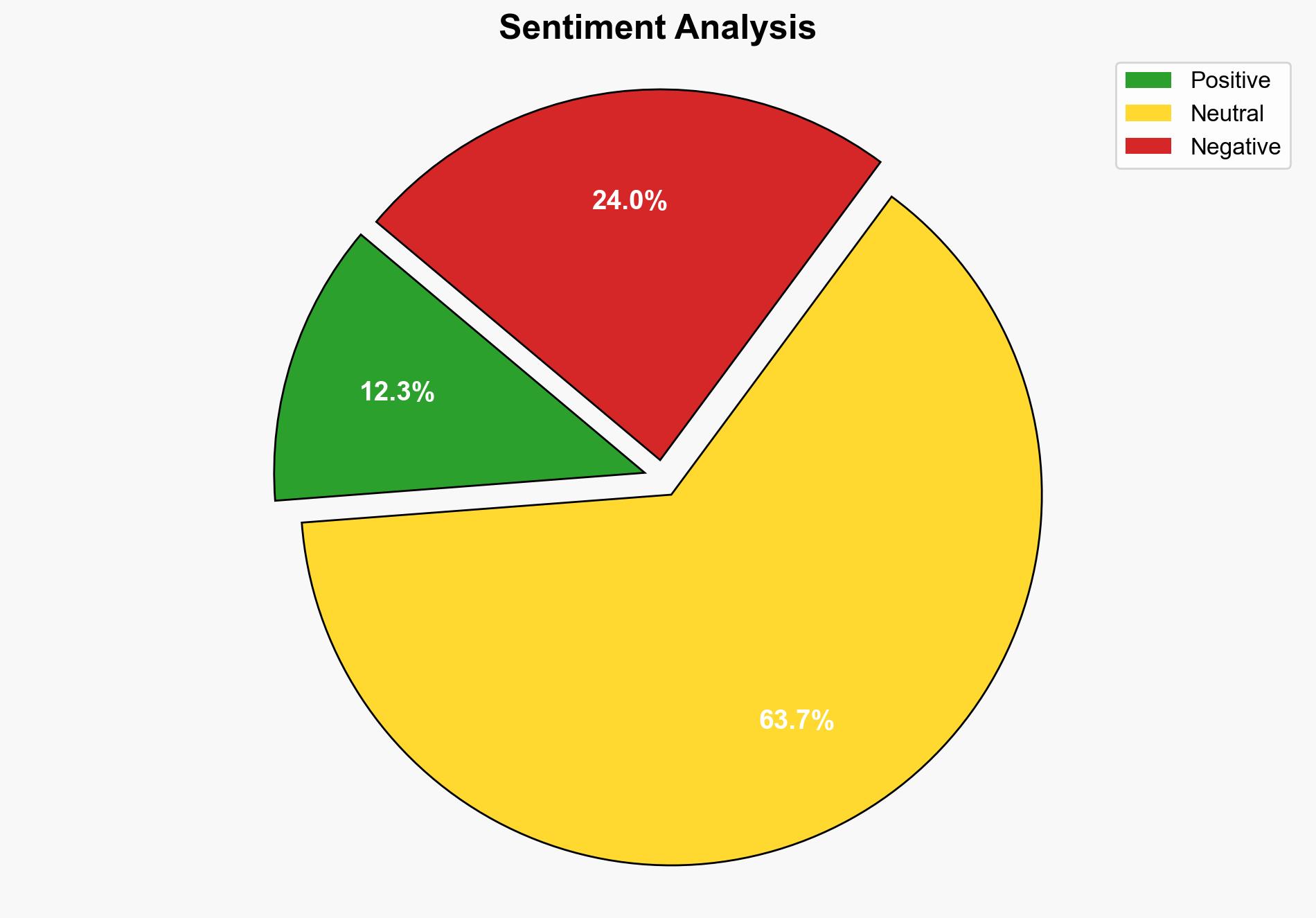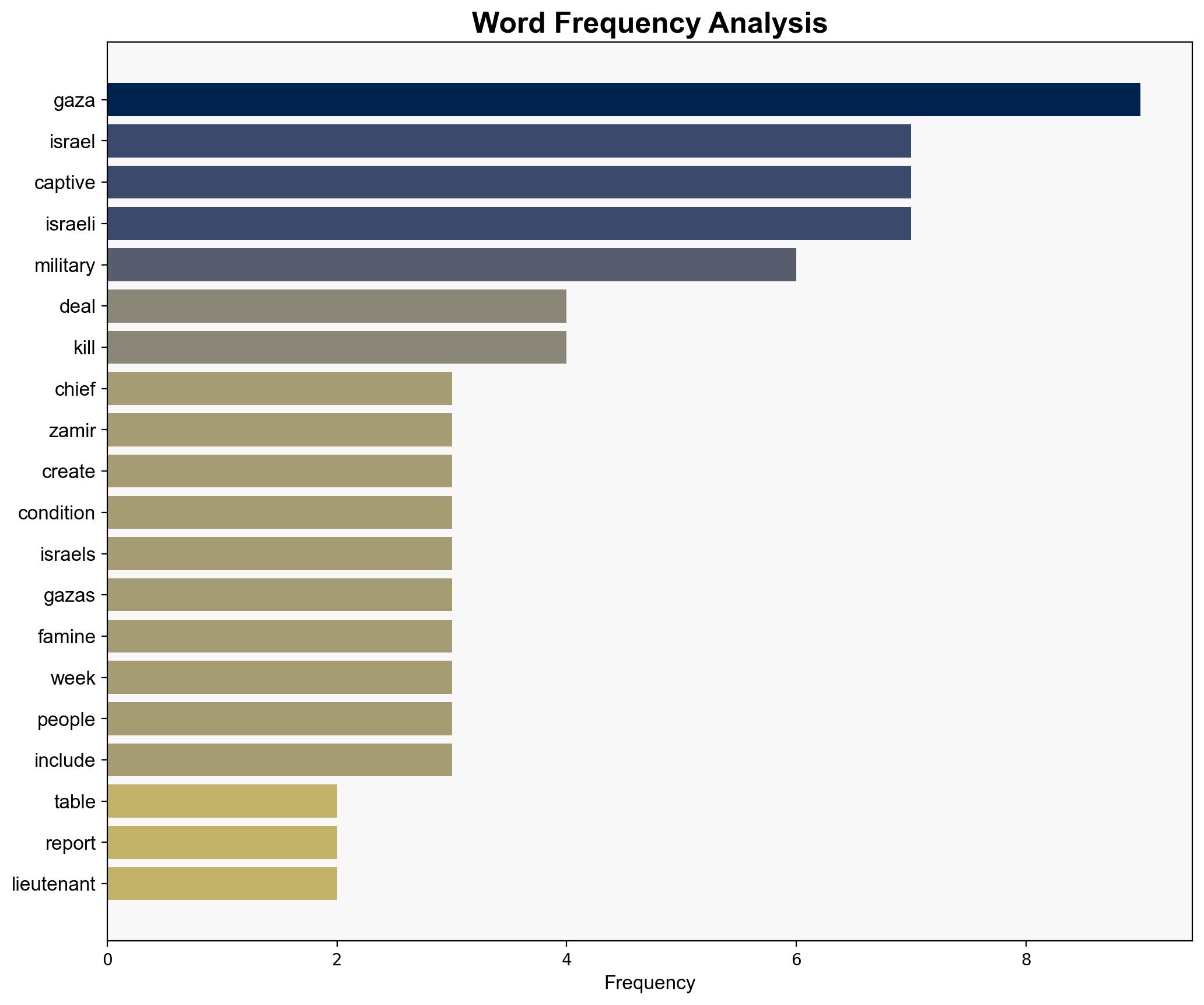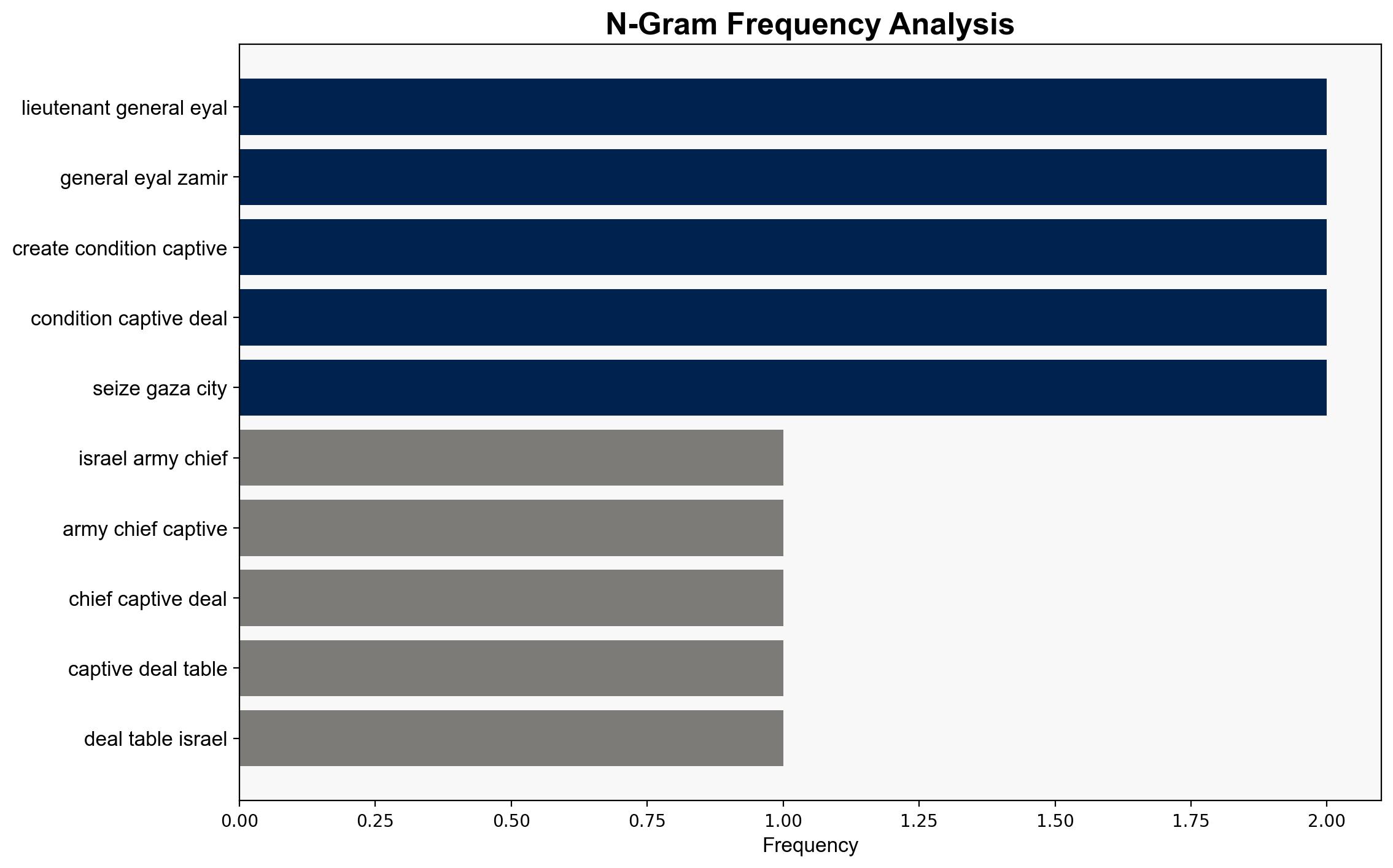Israel army chief says captive deal on table Israel must take it Report – Al Jazeera English
Published on: 2025-08-25
Intelligence Report: Israel army chief says captive deal on table Israel must take it Report – Al Jazeera English
1. BLUF (Bottom Line Up Front)
The most supported hypothesis suggests that the Israeli military’s current strategy in Gaza is designed to exert maximum pressure on Hamas to secure the release of captives. Confidence level: Moderate. Recommended action: Pursue diplomatic channels to complement military efforts, ensuring humanitarian considerations are addressed to mitigate international backlash.
2. Competing Hypotheses
Hypothesis 1: The Israeli military’s operations in Gaza are primarily aimed at creating conditions to force Hamas into a captive exchange deal. This involves leveraging military pressure to compel Hamas to negotiate under duress.
Hypothesis 2: The military operations are primarily focused on degrading Hamas’ capabilities and infrastructure, with the captive exchange being a secondary or opportunistic outcome rather than the primary objective.
Using ACH 2.0, Hypothesis 1 is better supported by the evidence, particularly statements from Israeli military leadership and the timing of military actions coinciding with diplomatic efforts for a truce.
3. Key Assumptions and Red Flags
– **Assumptions:** It is assumed that Hamas will respond predictably to military pressure and that international diplomatic efforts will align with Israeli objectives.
– **Red Flags:** Potential cognitive bias in overestimating the impact of military pressure on Hamas decision-making. The lack of detailed information on Hamas’ internal deliberations is a significant blind spot.
4. Implications and Strategic Risks
– **Implications:** Continued military operations may lead to increased humanitarian crises, potentially escalating international condemnation and affecting Israel’s diplomatic relations.
– **Strategic Risks:** Escalation could trigger broader regional conflict, disrupt economic stability, and increase cyber threats from sympathetic entities.
5. Recommendations and Outlook
- Engage in multilateral diplomatic efforts with key regional players like Qatar and Egypt to facilitate a sustainable resolution.
- Prepare for potential cyber retaliation by enhancing cybersecurity measures.
- Scenario Projections:
- Best Case: Successful negotiation leads to captive release and temporary ceasefire.
- Worst Case: Military operations escalate, leading to significant civilian casualties and international isolation.
- Most Likely: Protracted conflict with intermittent negotiations and limited captive releases.
6. Key Individuals and Entities
– Eyal Zamir
– Benjamin Netanyahu
– Hamas leadership
7. Thematic Tags
national security threats, regional focus, hostage negotiations, military strategy, humanitarian crisis




